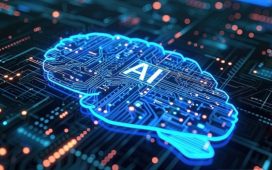In today’s technology-driven world, artificial intelligence (AI) has become a prominent field with vast applications across various industries. Understanding the different branches of artificial intelligence can provide valuable insights into how this cutting-edge technology is being utilized to enhance our daily lives.
Let’s dive into the top 7 branches of artificial intelligence and explore their unique characteristics and applications.
What are the basic components of AI?
Learning
One of the fundamental components of artificial intelligence is machine learning, which involves the development of algorithms that enable computers to learn from and make decisions based on data without being explicitly programmed. Machine learning algorithms can analyze large datasets to identify patterns and make predictions or decisions.
Reasoning and decision-making
AI systems are designed to emulate human reasoning and decision-making processes. These systems can assess information, draw logical conclusions, and make informed decisions based on the data available to them. This capability is crucial for AI applications in fields such as healthcare, finance, and logistics.
Problem-solving
Artificial intelligence is often used to solve complex problems that require analytical thinking and innovative solutions. AI algorithms can evaluate different scenarios, weigh the pros and cons of each option, and recommend the best course of action based on predefined objectives.
Perception
Perception is another key component of artificial intelligence, enabling machines to interpret and understand the world around them through sensors and data inputs. AI systems can process visual, auditory, and sensory information to make sense of their environment and respond accordingly.
The top 7 branches of artificial intelligence
1. Computer vision
Computer vision is a branch of artificial intelligence that focuses on enabling machines to interpret and analyze visual information from the real world. This technology is widely used in image recognition, object detection, and facial recognition applications.
2. Fuzzy logic
Fuzzy logic is a form of reasoning that allows for approximate reasoning rather than strict true or false values. This branch of AI is particularly useful in systems where imprecise or uncertain information needs to be processed.
3. Expert systems
Expert systems are AI programs that emulate the decision-making abilities of a human expert in a specific domain. These systems use logical reasoning and knowledge bases to provide advice, recommendations, or solutions to complex problems.
4. Robotics
Robotics is a field that combines artificial intelligence, mechanical engineering, and computer science to create autonomous machines capable of performing tasks in diverse environments. AI-powered robots can learn from their interactions with the environment and adapt their behavior accordingly.
5. Machine learning
Creating algorithms that can learn from data and get better over time is the goal of machine learning, a branch of artificial intelligence. This branch of AI is used in various applications, such as predictive analytics, natural language processing, and recommendation systems.
6. Neural networks/deep learning
Neural networks are a type of AI algorithm inspired by the structure of the human brain. Deep learning, a subset of neural networks, uses multiple layers of interconnected neurons to perform complex tasks such as image and speech recognition.
7. Natural language processing
Natural language processing (NLP) is a branch of artificial intelligence that focuses on enabling machines to understand, interpret, and generate human language. NLP applications include language translation, sentiment analysis, and chatbots.
FAQs:
1. What are the key applications of AI in healthcare?
AI is used in healthcare for medical imaging analysis, personalized treatment recommendations, predictive analytics, and virtual health assistants.
2. How does AI impact the finance industry?
AI is transforming the finance industry with algorithmic trading, fraud detection, credit scoring, and chatbot customer service solutions.
3. What are the ethical implications of AI adoption?
Ethical concerns related to AI include data privacy, algorithmic bias, job displacement, and the impact on human decision-making processes.
4. How can businesses leverage AI for competitive advantage?
Businesses can use AI for process automation, customer personalization, predictive analytics, supply chain optimization, and risk management strategies.
Conclusion:
In conclusion, artificial intelligence is a vast field with numerous branches that are revolutionizing various industries and transforming the way we interact with technology. Understanding the top 7 branches of artificial intelligence can help us appreciate the diverse applications and capabilities of this groundbreaking technology. From computer vision to natural language processing, AI continues to push the boundaries of what machines can achieve in the digital age.







